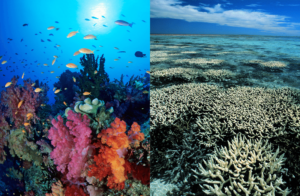In Australia, the iconic Great Barrier Reef’s long-term outlook has been downgraded in a grim new report by The Great Barrier Reef Marine Park Authority that warned businesses to “prepare for change” and changed the reef’s overall outlook from “poor” to “very poor”.
The Outlook Report 2019 noted the region had deteriorated since 2009, when it was considered to be at a “crossroads between a positive, well-managed future and a less certain one”. In 2014 it was seen as an “icon under pressure”, but this year, the report noted “Australia is caring for a changed and less resilient reef”. The report said without extra local, national and global action on the greatest threats, the overall outlook for the reef’s ecosystem would remain “very poor”.



